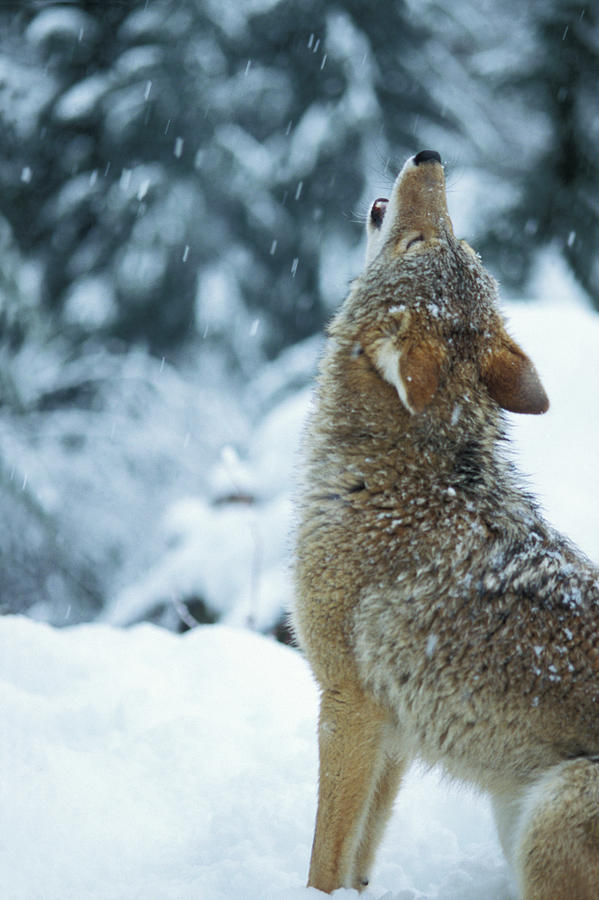

Coyote howls are much like human voices in that they are unique and recognizable by their family, or pack. The other reason a coyote howls is to locate a member of their pack. Coyotes use other methods such as scent markings like urinating on their boundary and leaving scat for their competitors to find, but howling signals to other coyotes much further and lets them know that the territory is taken. One is that they are using this vocalization to advertise their home range or territory. There are two most common reasons that you hear coyotes howl. Beagles and other hounds also do this, especially when in hunting situations. Alaskan malamutes and huskies are the most well-known for displaying this behavior, which makes sense since they are the most closely related to wolves. Domesticated dogs can even be known to howl or make other similar sounds. Howling is among a variety of vocal communication that is used by these canids to communicate everything from warning other coyotes to stay away, calling or attracting a mate, and even locating other members of their pack. Other members of the family include jackals, dogs, and the most notorious howlers – wolves. They also urinate on trees, bushes, rocks, posts and other structures and leave behind their scat as a way to mark territory and alert other coyotes to their presence, IDNR reports.Coyotes are members of the Canidae family. Howling, barking and other vocalizations as well as body language aren’t the only ways coyotes communicate. We hear howling at night because they are nocturnal and actively hunting at night, Live Science reports. The idea that coyotes and other canines, including wolves and dogs, howl at the moon is probably more coincidence than anything. Coyotes use body language, including gestures and facial expressions, to convey many different messages, according to the Illinois Department of Natural Resources. The sound a coyote is making is only one part of how it communicates both within its pack and with other coyotes and animals. Growling, for example, is used as a threat, perhaps to an animal it sees nearby, while barking is meant to warn an animal farther away or to communicate a threat to coyotes in its pack, the Urban Coyote Initiative reports.

They also bark, yip, growl, whine and huff, and each vocalization has a different intended purpose.

READ MORE STORIES IN NATURE CURIOSITY SERIESĬoyotes can differentiate among the coyotes in their group by their howls, so they also know when a howl is coming from a coyote that is not a part of their pack, according to the Urban Coyote Initiative.Ĭoyotes don’t communicate exclusively by howling, however. These howls can be impressive as their combined calls carry into the night. According to the University of Michigan Museum of Zoology, a coyote’s howl is a high-pitched cry meant to signal other coyotes and animals in the area. A coyote may let loose with a howl to call to its pack after hunting alone, for example, or it may howl to signal to coyotes from other packs that it is nearby, providing a warning not to invade its territory, Penn State University reports.Ĭoyotes also often howl together when pack members reunite after hunting, the University of Michigan states.

The sound of a coyote howling in the night is enough to stop people in their tracks, but have you ever stopped to think about what they are saying?įor coyotes, howling is one of the most basic forms of communication, but it can have several purposes.


 0 kommentar(er)
0 kommentar(er)
